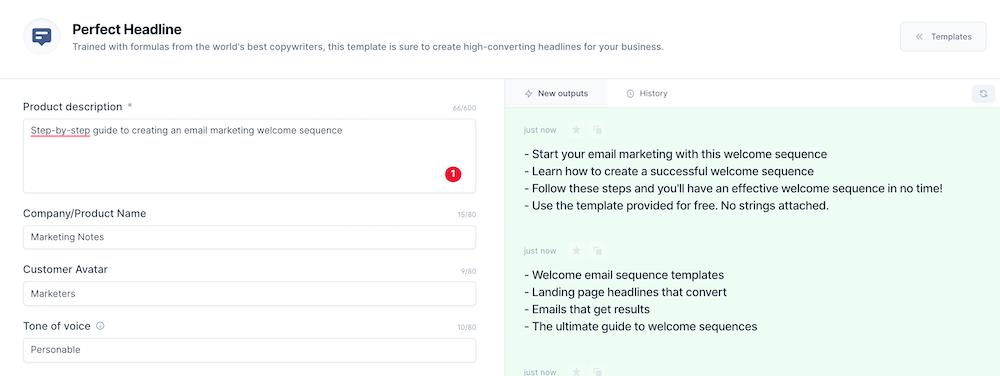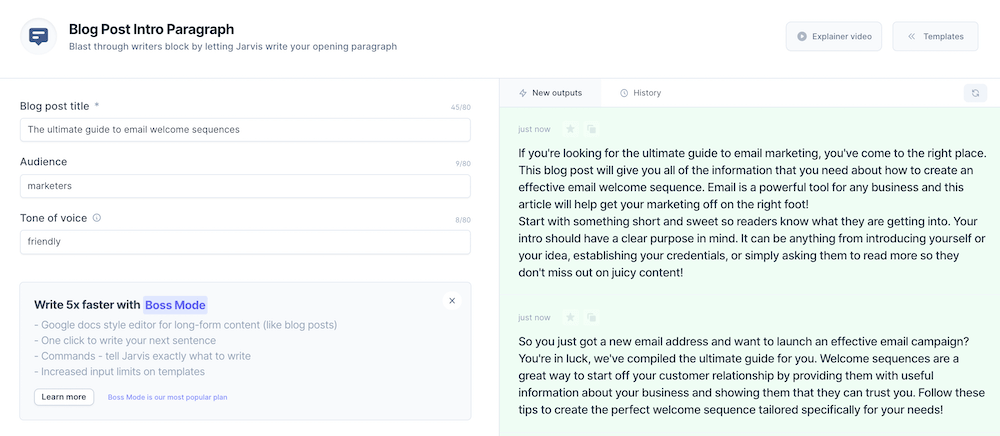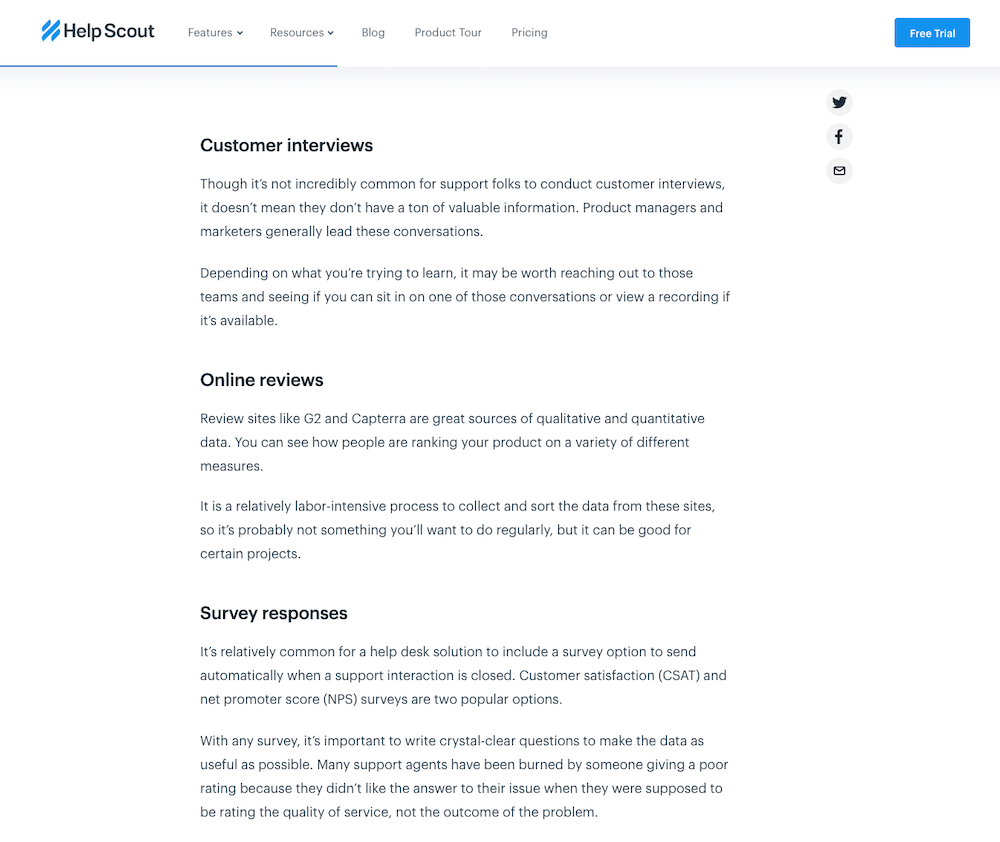Want to know how to structure a blog post in 2024?
Do you want to structure a blog post that stands out and generates more traffic to your blog website?
I’ve listed out 7 key ways to make sure your blog posts are easy to read and get the attention they deserve from your readers and search engine bots.
As of March 2024, approximately 7.5 million blog posts are published every day.
This number is based on research and reflects the industry's growth.
For example, the popular blog Huffington Post publishes a new post every 58 seconds.
That’s a lot of competition if you are publishing a blog post.
And the important question arises.
How do you even begin to stand out when there’s so much content out there ready and waiting for your audience to read?

The good news is there are a lot of sub-par blog posts out there that don’t provide the information readers need or that are published just for the sake of publishing.
Blogging can serve multiple purposes. For one, it’s a great way to establish yourself as an authority on your area of expertise.
It can also be an effective way to drive relevant traffic to your website and help people about the topics you’re passionate about.
Additionally, a blog is a perfect place to showcase your writing.
The key to standing out is to create great content that’s informative and valuable.
This will keep readers coming back and bring credibility to your business at the same time.
One of the most overlooked (yet simplest) parts of writing a blog post is its structure.
The way a piece flows and the transitions you apply to take readers from one part to the next are crucial to creating compelling blog posts that encourage people to keep reading.
Let’s understand from the basics.
What is a blog post?
A blog post is a single piece of content published on a blog website. A blog website is an online platform for publishing written content online.
Written content is a key component of a blog post.
What are the types of blog posts?
There are several blog posts that you can create and those can be standalone pieces or parts of a content series.
Here are the types of blog posts:
- How-to blog posts where you explain step-by-step guides to complete a particular task.
- List-based blog posts where you share an organized list of products or software.
- News blog posts where you share trending news articles.
- Interview blog posts where you reach out to experts in your niche and publish a detailed interview about their journey or so.
- Review blog posts where you publish reviews related to any products or services.
These are some of the most popular types of blog posts that bloggers write about.
Why a good blog structure is so important
Blog post structure is important first and foremost because it makes a piece easier to read for consumers.
The easier it is to read, the more likely they are to make it to the end and soak up the value you’re offering.
On top of this, a well-structured blog post is better for SEO and does your topic justice.
Structure improves readability, which means your audience is more likely to find the answer they’re looking for in your post.
Google will notice this through the number of time people spend on your site and it will push your posts up the search results.
7 steps to structure a perfect blog post in 2024
Here are the top 7 steps to create a perfect blog post structure to follow for your website at Growing Press.
1. Start with a compelling title
The first thing readers see before they start reading your blog post is your main headline which is a blog title.
It should give them enough information to make them want to click through to your post to read the main points, but it should also share what they’re going to get out of reading it.
For example, My title for this blog post is “My 7-Step Guide for How to Write a Perfect Blog Post Structure” which gives the reader a clear idea about what to expect in this blog post.
List posts, roundups, and how-to headlines perform particularly well, and titles with 6–13 words attract the highest and most consistent amount of traffic.
You can use Jasper’s powerful headline generator to come up with several different titles.
I recommend creating between 10–20 for each piece and choosing the best one from those.

You can try Jasper for free and get 10,000 bonus words from the Growing Press team. Click here to activate your Jasper free trial today.
2. Write enticing intro paragraphs
Once a reader clicks through to your blog post, the next thing they’ll read is the introduction.
It’s important to set the scene with your intro and encourage your audience to continue reading — basically, a lot weighs on this part of your blog post.
Get it wrong, and it’s easy for someone to click out and find another post that hooks them from the start.
There are several ways you can create an amazing intro paragraph:
- Ask a question: encourage readers to consider the answer to a question
- Aggravate a pain point: talk about a huge pain point readers might have
- Start with a stat: kick things off with a surprising statistic
- Tell an anecdote: use a personal story or experience to create a human connection from the get-go
- Begin at the end: share the end result of the process you’re going to talk about or put the ending of your story at the start before digging into the meat of it throughout the post
Jasper’s blog post intro paragraph template will quickly come up with a compelling introduction you can use in your pieces.
Simply enter what the piece is about, the audience you’re targeting, and the tone of voice you want to relay. Try Jasper.ai For Free

3. Use paragraph specific headings
No one wants to read huge blocks of text. In fact, blog readers are notorious for scanning posts to find the information they need.
Bloggers can make it as easy as possible for them to do this by adding in headers and subheadings where necessary.
Breaking up your posts into H2 and H3 headers gives it structure and provides hints into what each section will reveal.
The key to remember is that your post should make sense if people just read the headers.
Make sure they offer value and work as an outline or brief summary for people who don’t want to read the entire post.
Helpscout’s post on blog writing examples incorporates headings to make posts scannable.

4. Write short paragraphs and sentences
Just like headers break up the text, so do short paragraphs.
Gone are the days of paragraphs that run on for sentences and sentences.
Internet users prefer to see a bit of white space around the text, so give them what they want.
As a general rule, blog post paragraphs shouldn’t be longer than three sentences.
This might seem short, but it keeps your blog post scannable and helps readers find breathing space if your post is particularly long.
Shopify’s short paragraphs make it easy to scan their blog posts.

5. Make use of formatting features
While we’re still on the topic of making your blog post readable, let’s talk about formatting features like bullet points and numbered checklists.
Again, elements like this help break up the copy and make your post scannable.
It can also be a good way to keep your posts exciting: instead of having hundreds of paragraphs on top of each other, break them up with a bulleted list here or a numbered checklist there.
Bullet points make it quicker for consumers to read your posts (which is crucial in this day and age when everyone seems to be starved of time), and they can help you rank higher in the SERPs by providing an opportunity to incorporate multiple keywords.
Add a call to action (CTA) to the end of your post so that customers know exactly what steps you want them to take after they’ve read your blog post.
BuzzSumo uses bullet points to list out key things readers will find useful.

6. Add visuals like images, videos
Visuals like images, illustrations, videos, infographics, charts, and graphs add interest to your blog posts and content marketing in general — plus, they’re great for sharing on social media and with your email list.
They provide another perspective to blog content and break up paragraphs. The most common type of visual in blog posts is original graphics (32.5%), followed closely by stock photos (29.5%), and charts and data visualizations (15.1%).
When planning your blog posts, don’t overlook what graphics you’ll include.
In fact, the earlier you start planning them, the easier it will be to incorporate them into your blog posts.
Think about creating:
- Illustrations to highlight processes
- Videos that run through step-by-step guides and tutorials
- Charts and data visualizations to highlight key points
- Infographics that showcase customer survey information
The more original you can be with your visuals and the more aligned they are with the content of your blog post, the better.
Intercom uses screenshots, and illustrations, and pulls quotes to add a visual element to its blog posts.

7. Share a story in your blog post
While great blog posts tend to follow a simple “what, why, how” structure, in that they lay out the topic, they go on to talk about why it’s important, before concluding with information about how a reader can do it, their is still room for storytelling.
In fact, blog posts that incorporate personal anecdotes and have a clear beginning, middle, and end tend to perform better because they keep readers’ attention for longer (after all, humans have been soaking up stories for thousands of years).
Even if your topic is fairly dry, you can still inject some storytelling elements. Think about adding:
- Personal anecdotes to make your blog post stand out
- Real-life examples that illustrate the point you’re making
- A beginning, a middle, and an end that follows the traditional storytelling journey
QuickSprout does a good job of starting its blog posts with storytelling techniques.

We have also created helpful guides on Make Money Blogging, How to write a professional bio and how to write guest posts with AI. You can follow the links and read those helpful resources to grow your blog.
Frequently Asked Questions
What is the most important thing to use when structuring text in a blog post?
The most important thing is to put a relevant heading above each paragraph, or above a series of paragraphs that contain similar information. The headings should match the tone and relevance of paragraph texts. We recommend putting a heading above very long paragraphs, or above several shorter paragraphs for better structure.
What makes a successful blog post?
Most successful blogs have short paragraphs with a clear content structure. Use a simple structure with all the supporting formatting options that can enhance your blog post. Make sure your post is laid out in a clear and visually clean way to help readers follow along with your thoughts.
How do I structure a blog post for SEO?
You can make your blog post structure SEO-friendly by focusing on keywords and content optimization techniques. Make sure you use keywords in your content structure without keyword stuffing. Optimize content for better SEO reach. You can get help from tools like Frase.io which helps in content optimization.
Conclusion: Write a better blog post structure with Jasper.ai
Blogging and coming up with blog post ideas is an important part of running a business.
It attracts new customers, helps push your site up the search engines, and helps you create authority and credibility around your brand.
The more you can help people with your blog posts, the better, but they have to actually want to read your posts, to begin with — not an easy task when there’s so much competition out there.
Creating a good, clear structure is one of the easiest ways to make your blog posts stand out.
Ensuring readers want to continue reading is crucial if you want to keep them on-site and make an impression.
Use the tips we’ve listed here to structure your blog post with key formatting features, compelling headlines, and storytelling techniques.
Jasper AI is one of the most popular AI copywriting tools that can help you write a perfect blog post structure with the help of the latest artificial intelligence and machine learning technology. You can learn more about Jasper.ai's free trial and use it for free to generate up to 10k words of content.
Tap into Jasper’s powerful suite of templates to help you out. Build out your blog post introductions, create captivating headlines, and even create your entire blog post using the long-form assistant.
Sign up for Jasper today & Get 10,000 free credits from the Growing Press team!
